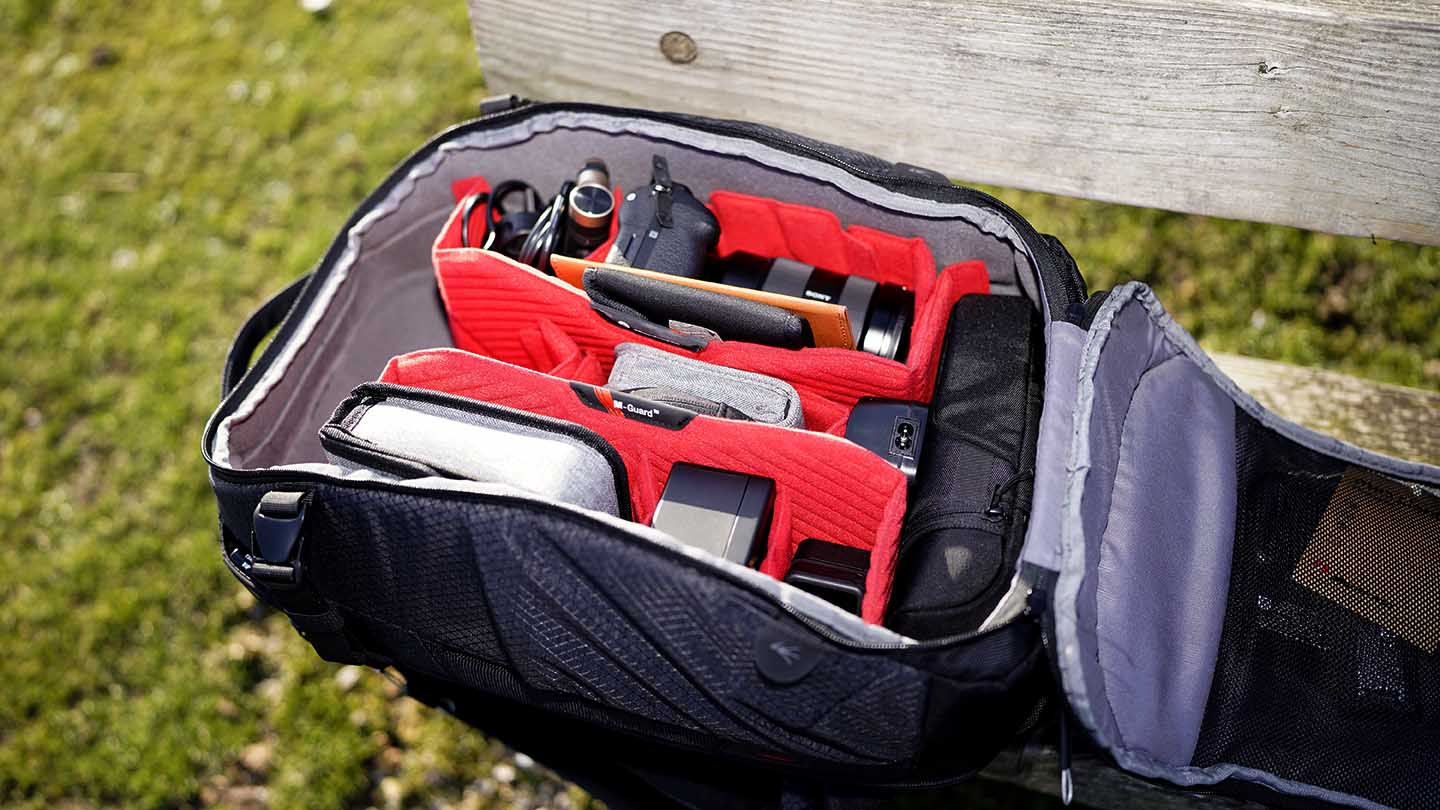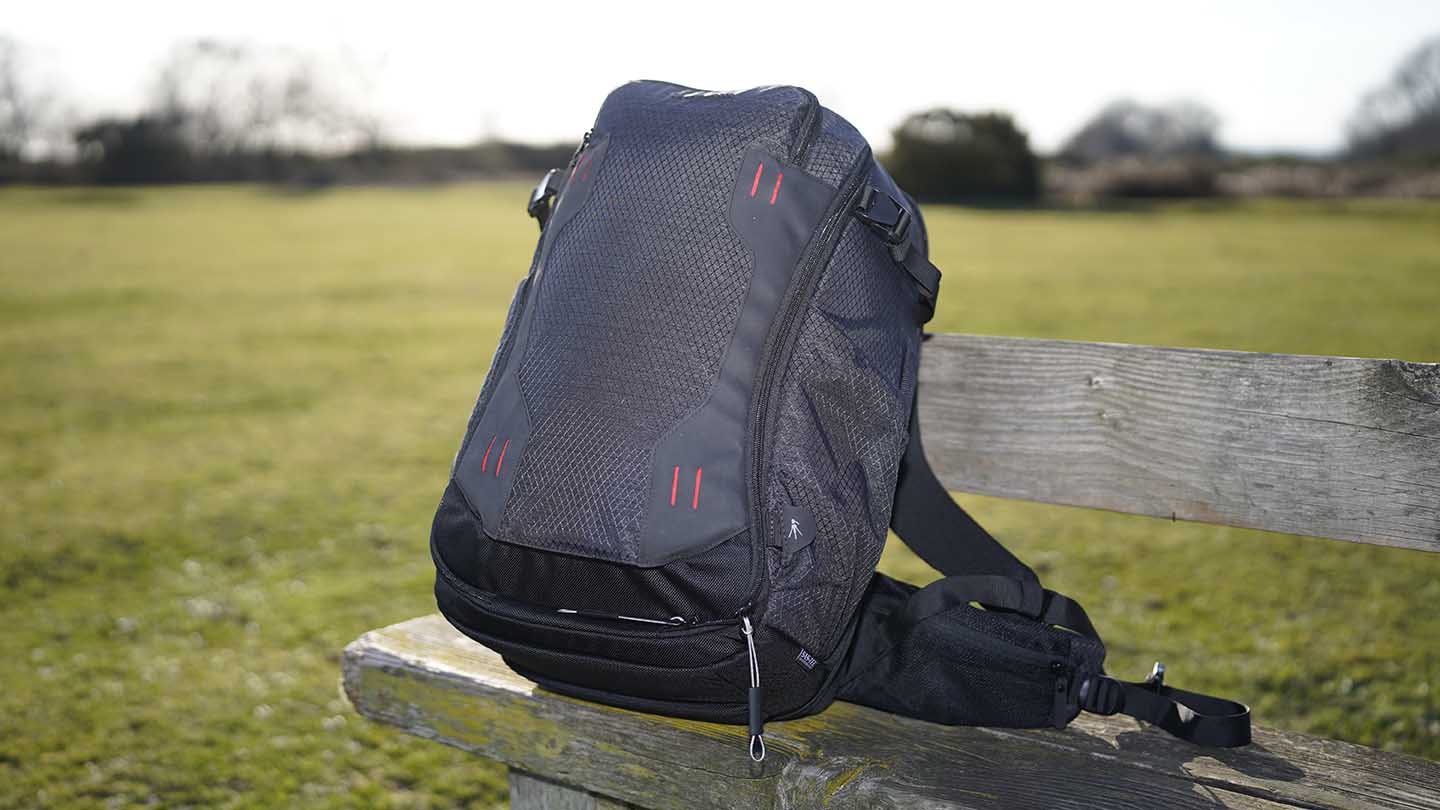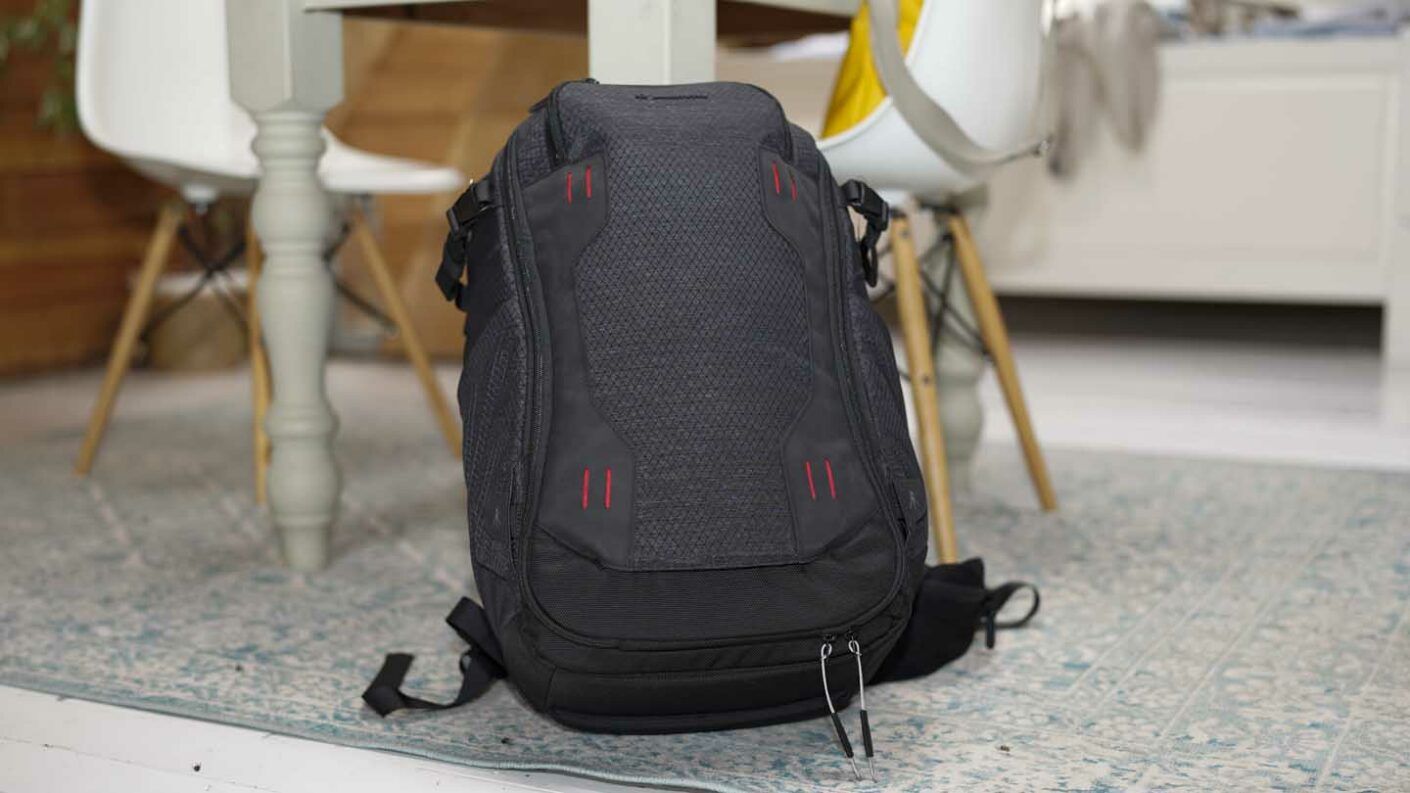As the backpacks go, the Manfrotto Pro Light Flexloader weighs in at quite a bit, 3kg, before it’s filled. It is, after all, aimed at pros, and pros are tough, or at least have assistants who are youthful, energetic and not yet broken by the weight of heavy kit bags.
Loading up the bag, there’s plenty of room for two Sony A7 bodies, six lenses, a ProFoto A1X, wireless mics, a Tascam DR-40, Manfrotto gimbal, and a 16-inch laptop.
Then there’s space for a tripod on one side, not just the travel variety, a water bottle on the other and a slider on the back. That’s an incredible amount of kit crammed into one 26.5L bag.
When you are off on a shoot, this bag enables you to pack everything in one neat package, which has proven useful on several occasions in the last month.
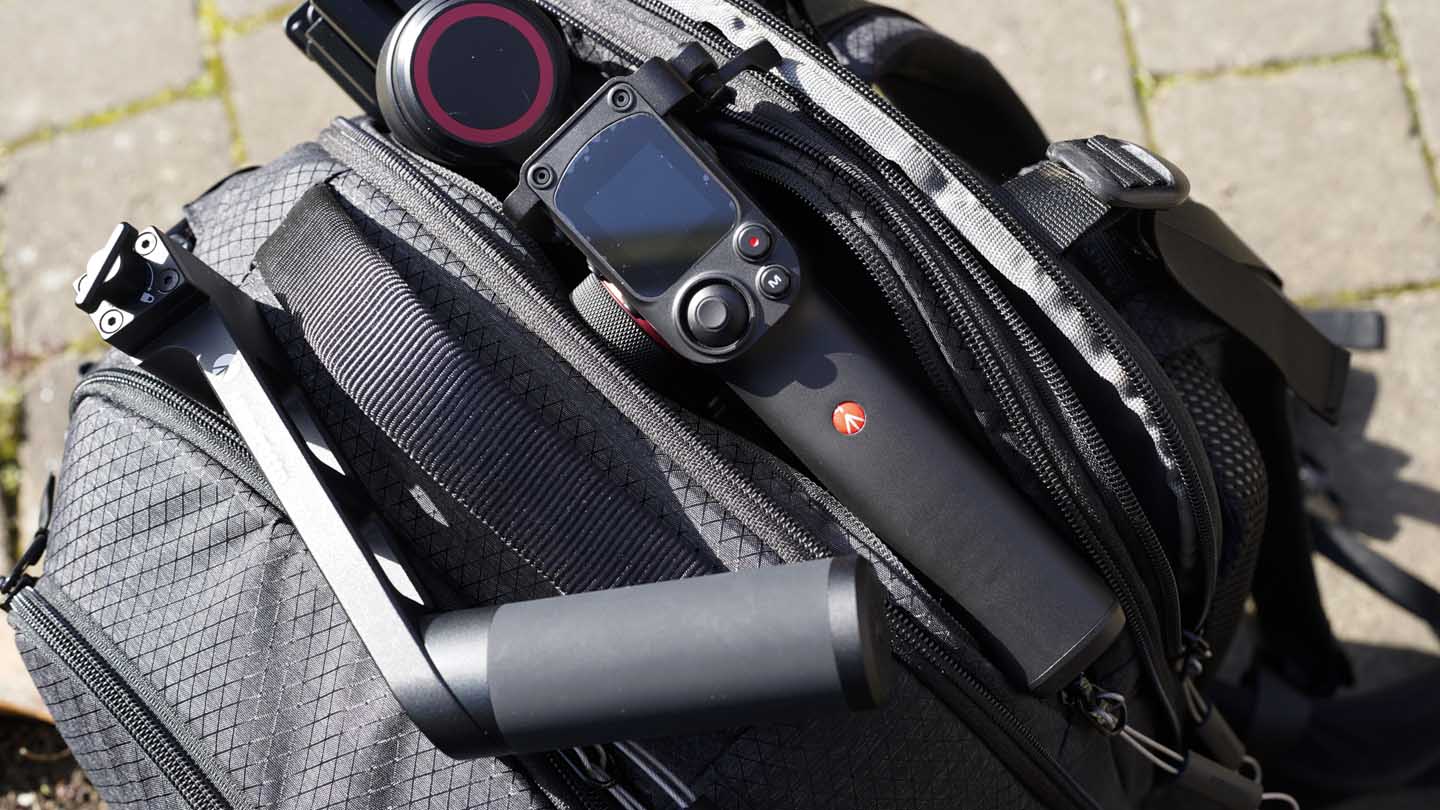
Used in the first instance as a kit transported, the PRO Light Flexloader Backpack Large is spot on. The pack’s construction enables you to load it to a back-breaking weight and lug it from the house to the car and then from the car to the location at the other end. Much further than the 100 yards or so at each end, and I think I’d be in trouble!
However, stripping down the kit, on and in, the backpack, and you have an almost perfect everyday working photo backpack.
I used the PRO Light Flexloader backpack on several commercial shoots, with the first being a typical corporate events photoshoot.
In the bag went two Sony A7 bodies, a 24-70mm, 85mm and 35mm, tripod in the case and ProFoto A1X flash. Packed and loaded with batteries, cards, a jumper and some food, there’s still space and the weight was quite respectable. However, with the laptop slipped in the back, the pack was starting to feel a little weighty, but once on and the strap adjusted, weight was evenly spread, and the bag was incredibly comfortable.
Through the event, the laptop and tripod were left in the office, and the bag stayed for the most part on my back. Most of the test was carried out through January and February, and to be honest, the weight helped to keep me warm.
Through the event, the front access proved effective for accessing lenses. There are also two zipped pockets on the waistband, ideal for batteries and memory cardholders. I also found that it was pretty easy to access the water bottle from the side pocket.
The small loop lock was also good for quickly securing the pack in a cloakroom during part of the shoot.
One of the great features is that the shoulder straps are incredibly sturdy, so attaching a camera using a PGYTECH Beetle camera clip.
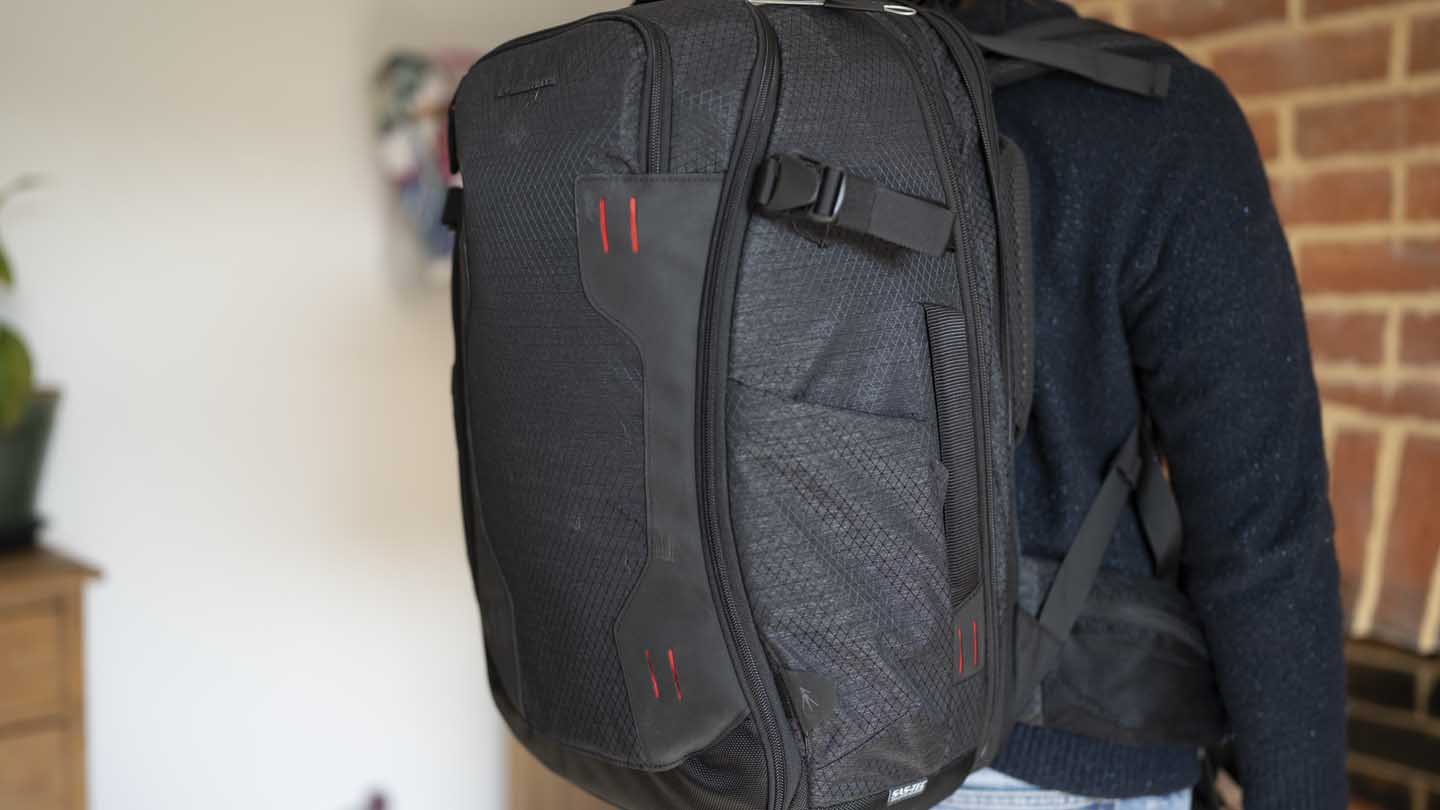
The next trip was to test the latest LEE Filters Elements Big and Little stopper; this time, I kitted up with a trusty Manfrotto 055 with head on the side, LEE FILTERs packed inside along with a Sony A7 III with 12-24mm and 24-70mm.
There was no doubt with all the kit the pack was starting to weigh quite a bit; and although the bag wasn’t overly full, it was getting close to the maximum weight I would normally find comfortable to carry.
Lifting the bag in and out of the car, those side and top handles come in useful, with the bag being extremely easy to shift and manoeuvre as needed.
Getting to the location and strapping the pack onto my back, the design of the shoulder and waist straps instantly transformed what was a heavyish bag into something far less weighty.
Manfrotto really knows how to design a pro kit pack, and this bag enables you to carry it all. The design of the weight-bearing structure also enables you to carry that weight without the discomfort that you can start to feel with other bags.
When it comes to accessing your kit the bag needs to be laid down on its back. The actual access through the front of the bag is excellent. There are pockets and space for all the kit – it feels well planned out and in use provides you with all the spaces you need to hold batteries, cards and anything else you can think of.
The only issue is that the bag laid on the ground can get wet or damp depending on the conditions. The weather was mainly overcast and rainy through this test, so the ground was guaranteed to be wet; it also meant that I was wearing a rain jacket, so a wet bag back wasn’t an issue.
There is, of course, the rain cover that can be pulled out and used as a groundsheet. Gaining access to this takes a while, but as rain covers go, this one is pretty robust and certainly does the job.
